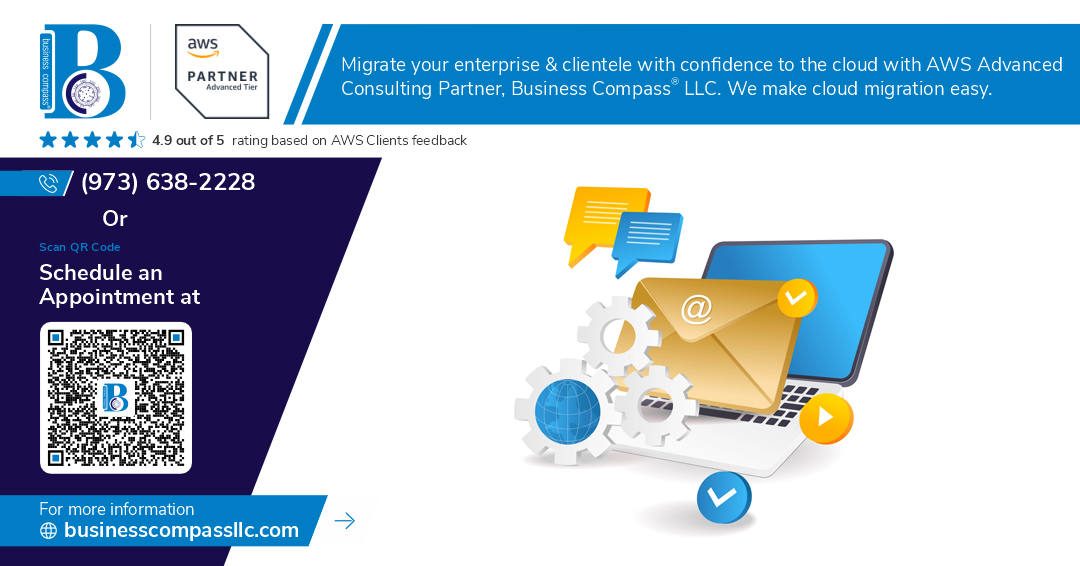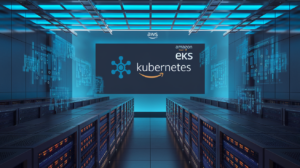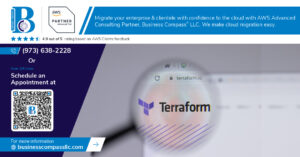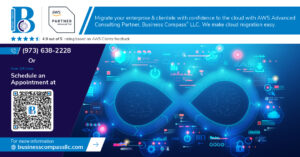When your AWS SES emails aren’t reaching their destination, you need more than CloudTrail to diagnose the problem. CloudTrail captures API calls but misses critical delivery events like bounces, complaints, and delivery confirmations that can make or break your email campaigns.
This guide is for developers, DevOps engineers, and email administrators who manage AWS SES deployments and need comprehensive visibility into email delivery performance. If you’ve ever wondered why emails bounce or get marked as spam without clear logs in CloudTrail, you’re dealing with SES CloudTrail limitations that require additional monitoring strategies.
We’ll walk you through setting up AWS SES configuration sets to capture complete event data that CloudTrail doesn’t show. You’ll learn how to implement CloudWatch Events SES monitoring for real-time alerts when delivery issues occur. Finally, we’ll cover building custom logging solutions that give you the detailed SES event tracking needed for effective AWS SES delivery debugging.
Stop flying blind with incomplete delivery data – let’s get you the full picture of your SES email performance.
Understanding AWS SES Event Limitations in CloudTrail
Identify which SES events appear in CloudTrail logs
CloudTrail captures API-level actions for AWS SES, including SendEmail, SendRawEmail, and configuration changes like creating configuration sets or verified identities. Management events such as domain verification, DKIM setup, and reputation monitoring settings are logged. However, CloudTrail focuses on service interactions rather than email lifecycle events.
Recognize gaps in email delivery tracking
The most significant gap lies in email delivery outcomes. CloudTrail shows when you sent an email but doesn’t reveal whether it bounced, was delivered successfully, or triggered spam complaints. This creates blind spots in your AWS SES delivery debugging process. Message-level events like opens, clicks, and delivery confirmations remain invisible in CloudTrail logs, leaving developers without complete visibility into their email performance.
Understand why bounce and complaint events are missing
CloudTrail operates at the API layer, not the application layer where email delivery events occur. Bounce and complaint events happen after SES processes your email request and interacts with recipient mail servers. These events originate from external mail providers reporting delivery failures or user complaints back to Amazon’s infrastructure. Since these aren’t direct API calls to AWS services, they fall outside CloudTrail’s logging scope.
Learn the impact on debugging email delivery issues
Without complete event visibility, troubleshooting becomes reactive rather than proactive. You might discover delivery problems only when customers complain about missing emails. SES CloudTrail limitations force developers to piece together incomplete data from multiple sources. This fragmented approach delays resolution times and makes it difficult to identify patterns in delivery failures, affecting your sender reputation and email deliverability rates.
Setting Up AWS SES Configuration Sets for Complete Event Tracking
Create configuration sets to capture all email events
AWS SES configuration sets act as containers for tracking rules that capture detailed email delivery events beyond what CloudTrail provides. Create a new configuration set through the AWS Console or CLI, naming it descriptively like “production-email-tracking” or “marketing-campaigns.” Configuration sets automatically collect bounce, complaint, delivery, send, reject, open, click, and rendering failure events. Each configuration set can handle multiple event destinations, allowing you to route different event types to various monitoring systems. Enable reputation tracking within your configuration set to monitor your sending reputation metrics and identify potential delivery issues before they impact your email campaigns.
Configure event destinations for comprehensive monitoring
Event destinations determine where your SES event data flows for analysis and alerting. CloudWatch Events serves as the primary destination for real-time monitoring, automatically creating metrics and enabling custom alarms. SNS topics provide immediate notifications for critical events like bounces and complaints, allowing rapid response to delivery issues. Kinesis Data Firehose destinations stream events to S3 or analytics platforms for long-term storage and analysis. Configure multiple destinations within a single configuration set to create redundant monitoring paths. Set up event publishing for all event types including delivery confirmations, which help verify successful email delivery when troubleshooting AWS SES delivery debugging scenarios.
Apply configuration sets to your email sending operations
Integrate configuration sets into your email sending code by specifying the ConfigurationSetName parameter in your SES API calls. For SendEmail operations, add the configuration set parameter alongside your destination, message, and source parameters. SDK implementations vary slightly – Python boto3 uses the ConfigurationSetName parameter while Node.js AWS SDK uses configurationSetName in the params object. Test your configuration set integration by sending test emails and verifying events appear in your configured destinations. Apply different configuration sets to separate email types like transactional versus marketing emails, enabling granular tracking and troubleshooting capabilities for each email category in your application.
Implementing CloudWatch Events for Real-Time SES Monitoring
Configure CloudWatch Events to receive SES notifications
CloudWatch Events acts as a central hub for capturing SES delivery events that don’t appear in CloudTrail logs. To enable this integration, navigate to the CloudWatch console and create an event rule targeting the SES service. Configure the rule to capture events from your SES configuration sets by specifying the appropriate event source pattern. The setup requires proper IAM permissions allowing CloudWatch to receive SES notifications and process them according to your defined rules.
Set up event rules for bounce, complaint, and delivery tracking
Creating granular event rules ensures comprehensive SES event tracking across all delivery scenarios. Configure separate rules for bounce events (permanent and transient), complaint notifications, and successful delivery confirmations. Each rule should target specific SES event types using JSON pattern matching to filter relevant data. Set up multiple targets per rule, including CloudWatch Logs groups, Lambda functions, or SNS topics to handle different event processing workflows based on your debugging requirements.
Create automated responses to email delivery failures
Automated response systems transform raw SES events into actionable remediation workflows. Deploy Lambda functions triggered by CloudWatch Events to process bounce and complaint notifications immediately. Configure these functions to update suppression lists, retry failed deliveries with exponential backoff, or alert operations teams when reputation thresholds are breached. Implement conditional logic to differentiate between permanent bounces requiring immediate suppression and transient failures suitable for retry mechanisms.
Monitor email reputation metrics through CloudWatch
CloudWatch dashboards provide real-time visibility into critical SES reputation metrics that impact delivery success rates. Create custom metrics tracking bounce rates, complaint percentages, and send quotas across different time intervals. Configure CloudWatch alarms to trigger when reputation scores drop below acceptable thresholds or when bounce rates exceed industry standards. Monitor sending velocity patterns and reputation trends to identify potential deliverability issues before they affect your email campaigns significantly.
Leveraging SNS Topics for SES Event Notifications
Configure SNS topics to receive SES event data
Setting up SNS topics for SES event notifications requires creating dedicated topics for different event types like bounces, complaints, and delivery confirmations. Navigate to the SNS console and create topics with descriptive names such as “ses-bounces-prod” or “ses-complaints-staging.” Configure your SES configuration sets to publish events to these SNS topics by adding event publishing destinations. This approach enables real-time notification delivery when email events occur, providing immediate visibility into your SES email delivery performance and issues.
Set up email and SMS alerts for critical delivery issues
SNS subscriptions transform raw SES event data into actionable alerts by routing notifications to email addresses, phone numbers, or other endpoints. Create email subscriptions for development teams to receive bounce and complaint notifications during business hours. Set up SMS alerts for high-priority events like reputation issues or sudden spikes in bounce rates that require immediate attention. Filter notifications based on event severity using SNS message filtering to prevent alert fatigue while ensuring critical issues reach the right people quickly.
Integrate SNS with Lambda functions for automated processing
Lambda functions connected to SNS topics enable sophisticated automated processing of SES events beyond simple notifications. Create Lambda functions that parse incoming event data, update database records with delivery status, or trigger remediation workflows when bounce rates exceed thresholds. These functions can automatically remove bounced email addresses from mailing lists, update customer communication preferences, or escalate persistent delivery issues to support teams. The serverless architecture scales automatically with your email volume while keeping processing costs minimal.
Archive event data for long-term analysis
Long-term SES event storage requires connecting SNS topics to durable storage solutions like S3 buckets or DynamoDB tables through Lambda functions or direct SNS subscriptions. Configure Lambda functions to transform and enrich event data before storage, adding timestamps, account identifiers, or campaign tracking information. Store events in partitioned S3 structures organized by date and event type to optimize query performance and reduce costs. This archived data becomes valuable for trend analysis, compliance reporting, and identifying patterns in email delivery performance over extended periods.
Building Custom Logging Solutions for SES Event Data
Store SES events in DynamoDB for queryable records
DynamoDB provides an excellent foundation for storing SES event data with fast retrieval capabilities. Create a table with message ID as the primary key and timestamp as the sort key to enable efficient queries across time ranges. Structure your data to include event type, recipient email, bounce reason, and delivery status. Use Lambda functions to process SNS notifications and insert records into your DynamoDB table automatically. This approach enables real-time querying of delivery events and supports complex filtering based on recipient domains, event types, or date ranges for comprehensive AWS SES delivery debugging.
Send event data to CloudWatch Logs for centralized logging
CloudWatch Logs offers centralized logging for SES events with powerful search and filtering capabilities. Configure your Lambda functions to send structured JSON logs containing all relevant SES event details to specific log groups. Use log streams to organize events by date or event type, making troubleshooting more efficient. CloudWatch Insights queries can extract patterns from your SES logging solutions, helping identify delivery issues across different email campaigns. Set up metric filters to create custom metrics from log data, enabling automated alerts when bounce rates exceed acceptable thresholds or when specific error patterns emerge.
Export events to S3 for long-term storage and analysis
S3 provides cost-effective long-term storage for SES event data with unlimited scalability. Implement automated exports using Lambda functions that batch events and store them in partitioned S3 buckets organized by year, month, and day. Use JSON or Parquet formats for optimal query performance with AWS Athena or other analytics tools. Configure S3 lifecycle policies to transition older data to cheaper storage classes while maintaining accessibility. This storage strategy supports historical analysis, compliance requirements, and machine learning initiatives that can improve email delivery optimization based on past performance patterns.
Create custom dashboards for email delivery insights
Build comprehensive dashboards using CloudWatch or third-party tools to visualize SES event tracking data and identify delivery trends. Create widgets displaying bounce rates, complaint rates, delivery success percentages, and geographic distribution of recipients. Use time-based charts to spot patterns in email performance across different sending periods. Implement real-time alerts for unusual activity patterns or delivery issues that require immediate attention. Custom dashboards transform raw SES event data into actionable insights, enabling proactive email delivery management and helping teams quickly identify and resolve SES delivery troubleshooting issues before they impact business operations.
Troubleshooting Common SES Delivery Problems Using Event Data
Diagnose bounce patterns and recipient issues
Hard bounces reveal permanent delivery failures like invalid email addresses or blocked domains. Check your SES event data for bounce types – hard bounces require immediate list cleanup, while soft bounces might resolve automatically. Monitor bounce rates by recipient domain to identify problematic providers. Configure SES configuration sets to capture detailed bounce reasons, helping you distinguish between temporary server issues and permanent address problems. Use CloudWatch metrics to track bounce patterns over time and identify recurring delivery issues with specific recipient segments.
Identify spam complaints and sender reputation problems
Complaint rates above 0.1% trigger SES reputation warnings and potential sending restrictions. Parse complaint feedback loops through SNS notifications to identify which content triggers spam reports. Monitor your sender reputation using SES reputation metrics in CloudWatch – declining reputation scores indicate authentication issues or recipient dissatisfaction. Cross-reference complaint patterns with email content, send times, and recipient lists to isolate problematic campaigns. Implement automatic suppression for complainers and analyze feedback to improve email content and targeting strategies.
Track delivery delays and performance bottlenecks
Delivery delays often stem from recipient server throttling or SES sending quotas. Monitor delivery timestamps in your event data to identify patterns – delays concentrated around specific times suggest quota limitations. Track delivery success rates by recipient domain to spot servers with aggressive rate limiting. Use CloudWatch Events to measure time between send requests and delivery confirmations. Configure alerts for unusual delivery patterns and implement exponential backoff for domains showing consistent delays. Analyze your sending patterns against SES limits to optimize throughput and reduce bottlenecks.
CloudTrail won’t capture all the SES events you need for thorough delivery debugging, but that doesn’t mean you’re stuck with incomplete visibility. By setting up configuration sets, CloudWatch Events, and SNS topics, you can build a comprehensive monitoring system that tracks every bounce, complaint, and delivery attempt. Custom logging solutions give you the flexibility to store and analyze this data exactly how your team needs it.
Don’t let missing events leave you guessing about delivery problems. Start by implementing configuration sets for your existing SES setup, then gradually add CloudWatch and SNS integrations to catch issues before they impact your users. With the right event tracking in place, you’ll spend less time hunting down delivery problems and more time building features that matter.



















